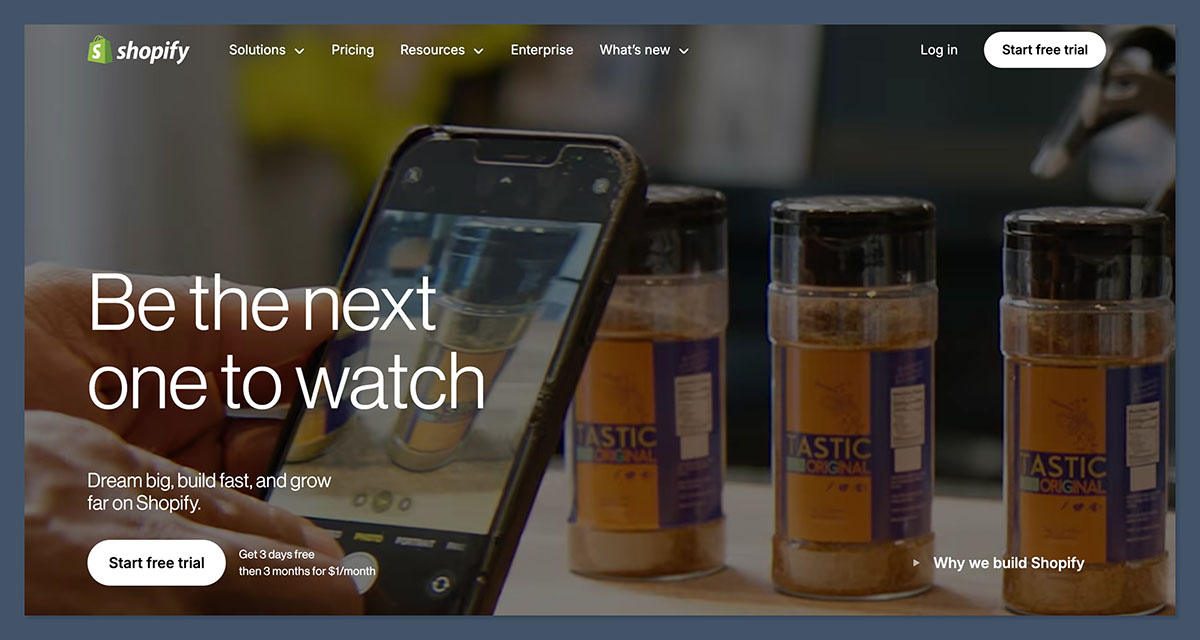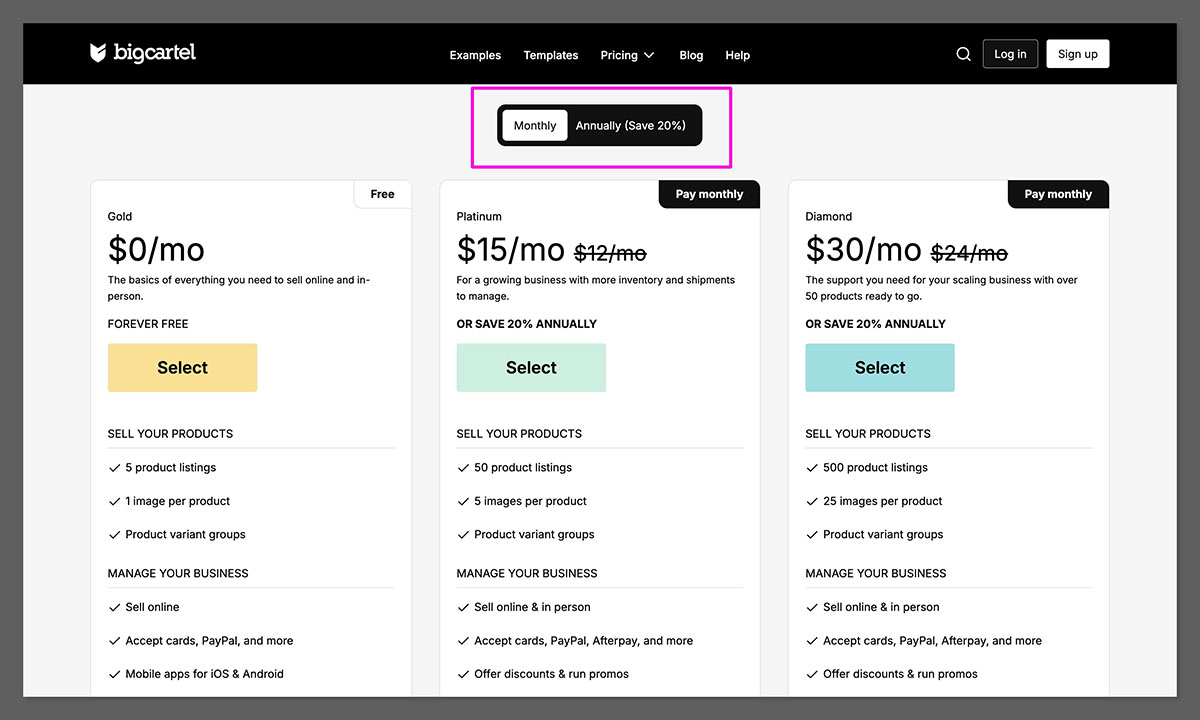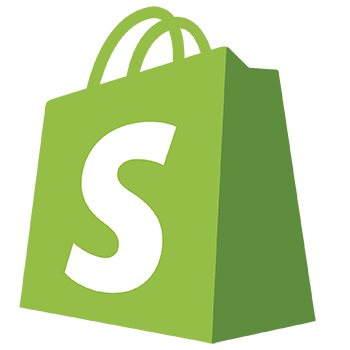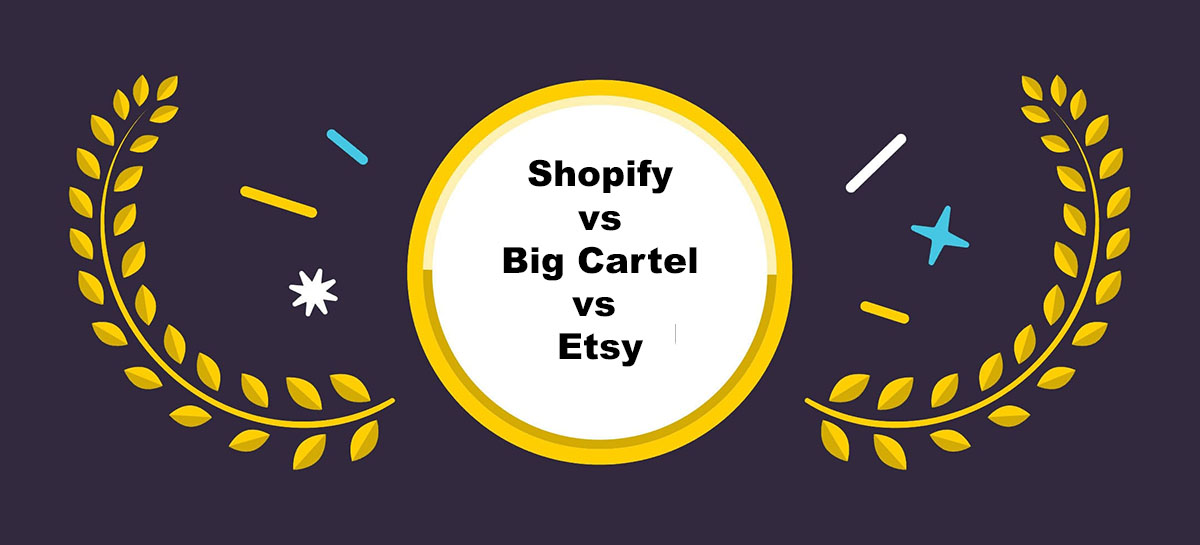Starting a print-on-demand business sounds exciting — until you realize you’ve got to pick a platform.
Shopify, Big Cartel, Etsy… they all promise success.
But from running my own POD store, I can tell you: they’re not built equally.
I’m breaking it down head-to-head, showing you the real experience behind the glossy marketing.
At the end of each section, I’ll tell you who wins.
Shopify vs Big Cartel vs Etsy: Quick Overview
Before we get deep into it, here’s a quick-hit comparison:
| Feature | Shopify | Big Cartel | Etsy |
|---|---|---|---|
| Audience | Self-generated | Self-generated | Built-in buyers |
| SEO Strength | Strong (Google) | Weak | Strong (inside Etsy) |
| POD App Integration | Full (Printify, etc) | Basic | Full (Printify, etc) |
| Fees | Monthly + App costs | Low, simple | Listing + Sales fees |
| Branding Control | Full | Full | Limited (Etsy brand) |
| Learning Curve | Medium | Easy | Easy |
Verdict:
- Shopify wins for scaling and full control.
- Etsy wins for fast traffic and beginner-friendly sales.
- Big Cartel is more of a side hustle platform, not a full business base.
While this table gives a quick glimpse, the real differences show up once you start managing orders, optimizing listings, and dealing with customers.
It’s easy to think “cheaper is better” or “faster is easier,” but trust me, if you’re planning to turn this into a business and not just a hobby, these details matter.
Most sellers eventually realize that owning your customer list and having SEO options are what truly decide if you’re running a brand — or just a storefront for someone else.
Shopify: The Scalable Machine for Print on Demand

When I first opened my Shopify store, it felt like standing in an empty mall.
Nobody was coming unless I did the work. SEO, ads, emails — all on me.
But here’s why Shopify wins if you think long-term:
What Shopify Does Well
- Full ownership: You build your own brand, customer list, and traffic.
- Plug-and-play with Printful, Printify, Gelato.
- Great SEO tools: blogging, custom URLs, title tags, alt text.
- Huge flexibility: run sales, upsells, memberships, anything.
One thing people underestimate is how critical email marketing becomes. Shopify lets you connect Klaviyo, Mailchimp, or Shopify Email easily.
I built my email list from day one, and it saved my store during slow months. You can’t even start building an email list properly on Etsy.
Another hidden win with Shopify? Analytics.
Their dashboard shows conversion rates, abandoned carts, customer lifetime value — the kind of data that lets you tweak and grow.
You simply won’t find that depth of control with Big Cartel or Etsy.
Shopify also keeps rolling out innovations, like Shopify Magic AI for faster product descriptions, or Shopify Markets for cross-border sales.
It’s built for serious businesses who don’t want to be stuck on a small platform once they hit real numbers.
What Shopify Struggles With
- Monthly fees ($29+), app costs pile up fast.
- Learning curve: you’ll need to understand SEO, ads, emails.
- No built-in traffic — you have to hustle for every visitor.
The monthly cost is real. Between apps, themes, and maybe hiring help, Shopify can easily cost $50–$100+ per month before ad spend.
If you’re expecting “free traffic,” you’ll be disappointed.
It’s a platform that rewards effort, not laziness.
Shopify Pros and Cons
| Pros | Cons |
|---|---|
| Full brand control | Can get expensive (apps + themes) |
| Excellent SEO capabilities | No instant traffic |
| Massive app marketplace (8,000+ apps) | Takes time to set up and scale |
Verdict:
If you’re serious about building a brand and scaling your POD business, Shopify’s your best bet.
Just know you’ll need marketing chops (or the budget to hire).
Big Cartel: The Artist’s Secret Weapon

Big Cartel feels different.
It’s small, simple, and designed for indie makers who don’t want the stress of a full-blown ecommerce store.
I tested it for a side project selling digital prints. Here’s what I found:
What Big Cartel Does Well
- Free plan for up to 5 products — can’t beat that if you’re testing.
- No complex setup needed — very beginner-friendly.
- No transaction fees on your sales.
- Minimalist and fast to launch.
Big Cartel really shines when you’re selling low-volume, high-margin products like original art, limited edition tees, or small batch items.
It’s designed for creators, not marketers. If you’re overwhelmed by Shopify’s bells and whistles, Big Cartel feels refreshing.
Another underrated part: their simplicity means fewer tech headaches. You don’t need plugins, coders, or fancy automation. In about an hour, you can be fully set up and ready to sell.
That being said, most serious POD sellers outgrow Big Cartel once they want things like inventory management, A/B testing, upsells, or email capture.
What Big Cartel Struggles With
- Limited customization.
- Poor SEO control — no blogs, limited URL structure.
- Hard to scale — once you hit 50+ products, it feels clunky.
- Fewer POD integrations (some Printful/Printify support, but not much).
Big Cartel’s weakness shows fast once you want more power.
Want to add reviews, bundles, loyalty rewards? You’ll quickly hit a wall. It’s charmingly simple until you need it to be a real ecommerce engine.
If you’re trying to sell more than a few items a week or build serious recurring traffic, Big Cartel just won’t cut it.
Big Cartel Pros and Cons
| Pros | Cons |
|---|---|
| Free to start | Not ideal for scaling |
| Easy for artists with a few items | Very basic SEO tools |
| Simple and quick to set up | Limited POD app support |
Verdict:
If you’re selling a few items and don’t care about massive growth, Big Cartel is perfect.
For building a real print-on-demand brand? It’s not enough.
Etsy: Built-In Buyers, Built-In Rules

I launched a print-on-demand Etsy shop to test the waters — and honestly, sales started faster than anywhere else.
But it came with strings attached.
What Etsy Does Well
- Instant access to millions of shoppers.
- Built-in search engine — no need for Google SEO.
- Connects easily to Printful, Printify, Gooten.
- Easier for beginners to get first sales.
When you first open your Etsy shop, the platform practically hands you an audience. It’s crazy how a single good listing with strong keywords can bring daily views without spending a dime on ads.
For new sellers, especially POD beginners, that’s a huge deal. You can get proof of concept way faster than building your own website from scratch.
Another overlooked win with Etsy? Social proof.
When buyers see “10,000 sales” or “4.9-star rating” on a listing, they trust you immediately. That kind of built-in credibility is almost impossible to create on your own site in the beginning.
Etsy leverages that trust for you — at a cost.
What Etsy Struggles With
- Etsy owns your customer — not you.
- Listing fees ($0.20 each) + 6.5% transaction + payment fees (~3%).
- Hard to stand out unless you master Etsy SEO.
- Limited branding options (buyers know they’re buying from “Etsy,” not you).
And about that cost: the fees stack up fast. Between the listing fees, transaction fees, and payment processor fees, expect Etsy to take 8%–10% of your revenue before you even look at advertising costs.
It’s death by a thousand cuts if you’re not careful about pricing your products properly.
Plus, Etsy’s control over your store is absolute. They can suspend listings, change policies, or tweak their search algorithm without warning.
You’re renting space — not owning it.
Etsy Pros and Cons
| Pros | Cons |
|---|---|
| Huge ready-to-buy audience | You don’t own customer data |
| Easier first sales | High fees cut into margins |
| Great for testing new ideas | Tough competition |
Verdict:
Etsy is your fastest path to print-on-demand sales.
But if you want true brand control or higher profits, you’ll eventually need your own store (like Shopify).
Print on Demand and SEO: Which Platform Wins?
Getting organic traffic is a game-changer for POD sellers. Here’s how the platforms stack up:
Shopify SEO
- Full access to Google SEO best practices.
- Blog posts, collection pages, custom product URLs.
- Structured data apps available to boost rankings.
With Shopify, you can create a full blog, optimize your product pages, build backlinks, and dominate Google search if you’re serious about it.
One of my stores ranked on page 1 for “custom dog mugs” within 6 months just by posting weekly blog content and using basic Shopify SEO apps.
Big Cartel SEO
- Very limited.
- No blog functionality.
- Only basic meta titles/descriptions.
Big Cartel feels invisible when it comes to Google SEO.
Even if you build an amazing store, you won’t see much organic traffic because the platform just doesn’t give you enough control over SEO elements.
It’s fine for casual sellers, but serious SEO-focused businesses will find it painfully restrictive.
Etsy SEO
- Etsy search engine only.
- Ranking based on tags, titles, descriptions, and sales velocity.
- Can’t build backlinks to your Etsy store like a normal website.
Mastering Etsy SEO is an art of its own. You need to pick the right keywords, price your products to match shopper intent, and tweak your listings constantly to stay competitive.
But even if you become a wizard at Etsy SEO, you’re still trapped inside Etsy’s ecosystem — you can’t easily drive organic Google traffic directly to your Etsy shop.
SEO Comparison Table
| SEO Element | Shopify | Big Cartel | Etsy |
|---|---|---|---|
| Google SEO | Full control | Minimal | None (only Etsy SEO) |
| Blogging | Yes | No | No |
| Structured Data | Apps available | No | No |
| Backlink Building | Yes | Limited | No |
Verdict:
Shopify wins by a mile if SEO is part of your strategy.
Etsy’s SEO is good inside Etsy only — but you can’t grow much outside their walled garden.
If you want to build long-term value and passive traffic, Shopify is the only option that lets you own your SEO destiny.
Fees and Costs: What You’ll Actually Pay
Let’s talk about real numbers — because fees can kill your margins faster than anything else if you’re not watching.
Shopify Costs

- $29/month for Basic plan.
- Apps typically $5–$50/month depending on needs.
- Themes can be free, or $180–$350 one-time.
- Shopify Payments charges 2.9% + 30¢ per transaction (Basic plan).
Shopify’s predictable monthly fee structure feels expensive at first, but it evens out over time, especially if you’re selling consistently. Plus, when you control your site traffic, you can avoid constant paid ads.
Good news though:
Right now, Shopify offers an intro deal where you can get your first 3 months for just $1/month.
This is a huge win for new sellers who want to launch lean without paying full price upfront.
It gives you a real chance to build your store, connect your POD apps, and start driving traffic before your monthly fees kick in properly. After the 3 months, it moves to the regular $29/month pricing.
If you’re planning smart, you can even launch your store, validate products, and start generating revenue — all while spending less than $5 total on subscription fees for your first quarter.
Big Cartel Costs

- Free plan (up to 5 products).
- Paid plans: $9.99/month (50 products) or $19.99/month (500 products).
- No transaction fees (big win if you sell high-ticket items).
Big Cartel is super cost-effective for hobby sellers. You’ll only spend $9.99/month in most cases.
But again, low fees also mean fewer features — so you’ll be paying with time and missed opportunities instead of dollars.
Etsy Costs
- $0.20 per product listing (every 4 months).
- 6.5% transaction fee on sales.
- 3%–4% payment processing fee (depending on country).
- Optional Etsy Ads if you want extra visibility ($1–$5/day minimum suggested).
Etsy’s fees sound tiny at first… but after you make a few hundred sales, you’ll realize they eat 10–15% of your revenue easily, especially if you rely on Etsy Ads to stay competitive.
Cost Comparison Table
| Platform | Fixed Fees | Transaction Fees | Notes |
|---|---|---|---|
| Shopify | High | Medium | Control everything, but pricier |
| Big Cartel | Low | None | Cheap if selling few items |
| Etsy | Low | High | Fees stack up fast at volume |
Verdict:
If you’re planning big volumes, Shopify ends up cheaper over time.
If you’re selling a few items, Big Cartel or Etsy can save you upfront.
If I had to start again today, I’d launch on Etsy for fast cash flow, but build my Shopify store at the same time behind the scenes.
Final Verdict: Which Should You Choose for POD?
Let’s boil it down based on your goals:
| Situation | Best Platform |
|---|---|
| You want full control and brand building | Shopify |
| You want fast first sales and low effort | Etsy |
| You want to sell 1–5 products casually | Big Cartel |
If you’re brand new and broke? Start on Etsy to learn the ropes and validate your ideas.
But don’t stay there forever. Etsy owns your customers, your SEO, and your future.
If you’re planning to turn POD into your full-time business? Build your Shopify store immediately.
It’s harder at the start, but you’ll thank yourself 12 months later when you own your audience and keep your profits.
If you’re selling one-of-a-kind art pieces or testing a hobby project? Big Cartel is simple and cheap — but treat it as training wheels, not a destination.
My honest advice:
✅ Start lean.
✅ Validate your products.
✅ Shift to full ownership (Shopify) once you’ve got momentum.
FAQs: Quickfire Answers
Can I sell POD products on Etsy?
Yes — and tons of sellers do. But you must disclose your production partners (like Printify or Printful) in your listings to stay compliant with Etsy’s handmade policy.
Failing to do so can get you banned.
Is Big Cartel good for POD?
It’s good if you have very few products and want an easy, no-frills launch.
But Big Cartel lacks serious automation, fulfillment, SEO, and app support — so scaling beyond a few sales a week is tough.
Do I need Shopify to use Printful or Printify?
No — you can connect Printful and Printify to Etsy too.
But Shopify makes it much easier to automate everything (like order syncing, upsells, discount codes, customer emails) — which saves you time and headaches at scale.
Should I start with Etsy then move to Shopify?
Absolutely — it’s what most successful POD brands do.
Use Etsy to generate early sales and reviews, then build a Shopify store to scale bigger with higher profits and true customer ownership.
How much should I expect to spend getting started with Shopify, Bg Cartel or Etsy?
- Etsy shop setup: ~$20 (listing fees) + $0 ads (optional)
- Big Cartel: Free or $9.99/month plan
- Shopify: ~$29/month plan + ~$50–$100 in apps (depending on needs)
If you’re budget-conscious, Etsy or Big Cartel can get you live for under $50.
If you’re planning a real business, expect to spend around $100–$200 getting your Shopify store looking professional from day one.
Final Wrap-Up
Choosing your platform is like choosing your business partner.
- Shopify = Freedom, scalability, full ownership.
- Etsy = Fast cash flow, rented audience, limited control.
- Big Cartel = Easy testing ground, hobby-level business model.
If you’re dreaming of a print-on-demand brand that lasts, not just a seasonal side hustle...
Pick the platform that gives you the keys to the kingdom — not just a booth in someone else’s market.
Your future self will thank you.



